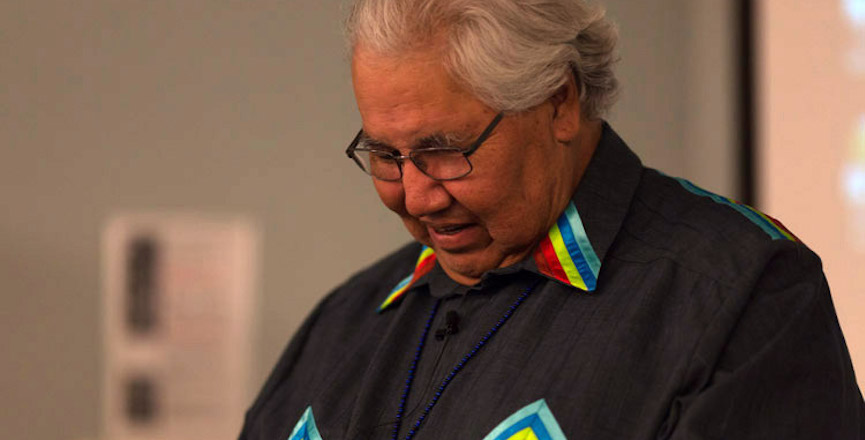Credible stories have been circulating for many years about children who disappeared without a trace at Indian Residential (so-called) schools.
Indigenous Services Minister Marc Miller now says those horrific places were not educational institutions. They were, in reality, labour camps, the minister admitted in a press conference.
After last week’s grisly discovery of 215 buried children in Kamloops, we have physical proof of what we as a society should have acknowledged decades ago.
Many have spoken about the thousands of Indigenous children who died from disease, abuse and mistreatment at the hands of the government and churches. Despite apologies and a commission of inquiry, their testimony somehow never got the full respect it deserved.
The story of Jonish Saganash
Nearly seven years ago in the House of Commons the New Democrats used a parliamentary manoeuvre to force a debate on an issue the Harper Conservative government wanted to avoid: missing and murdered Indigenous women and girls.
Romeo Saganash, the first Cree lawyer in Quebec, and then-MP for the northern Quebec riding that includes the James Bay Cree homeland, was first to speak.
To give context to the debate, Saganash told his colleagues about the disappearance of his own brother at residential school, 60 years earlier:
“Let me tell a story about a little boy named Jonish,” he said, as the other MPs put away their smart phones and tablets and sat quietly and listened. “He was sent to a residential school in 1954. He was five years old. He never came back. Apparently, he died the first year he arrived at the residential school.”
The Cree MP talked about his own mother. She did not know about the death of her son until two years after it happened. For 40 years after his death, she had no idea where her boy was buried.
It was only by chance, Saganash related, that one of his sisters happened to be in the area of the so-called school one day, and someone who was there told her: “I know where your little brother is buried.”
Saganash’s sister filmed the burial site and brought the film back to their mom to show her.
“I do not know if any of the members have seen their mother cry,” Saganash said, his voice quivering. “I saw my mother cry many times, but the day she saw that video — I had never seen her cry that way.”
“That, ” he concluded, “was closure.” It was the closest his mom would get to some sense of acknowledgement for her lost son, he added.
In 2013, while the Truth and Reconciliation Commission was still carrying out its work, commission archeologist Alex Maas shared some of the information the commission’s Missing Children’s Project had uncovered.
Maas and her colleagues managed to identify no fewer that 4,100 children who died while notionally in the care of the residential system. Most died of diseases, including the flu and tuberculosis (TB). Maas described the residential institutions as breeding grounds for TB.
Some children committed suicide; others died while trying to flee and make their way home.
Maas reported that a thorough examination of government, school and other records, and the physical evidence of school cemeteries, allowed her to conclude that at least one child out of every 50 died while at the church-run residential institutions.
The commission archeologist acknowledged, however, that records were incomplete. She said she was certain the actual number (and proportion) of children who died was significantly higher than the cases for which she could find actual documentation.
Kamloops has definitively proved that point.
Murray Sinclair weighs in
Shortly after the Kamloops revelations, the Truth and Reconciliation Commission’s chair Murray Sinclair issued a highly revealing statement, in both video and written form.
Sinclair said he and the other commissioners had not expected they would have to deal with the many stories of children who died in the residential institutions. As well-informed as they were, those stories and revelations came as a shock to them.
It is impossible not to feel sick with grief and anger when reading or listening to Sinclair’s words.
“Survivors talked about children who suddenly went missing. Some talked about children who went missing into mass burial sites,” Sinclair stated, carefully and without visible emotion.
Then came the brutal facts.
“Some survivors talked about infants who were born to young girls at the residential schools, infants who had been fathered by priests, were taken away from them and deliberately killed — sometimes thrown into furnaces, we were told.”
Taking in all this utterly horrifying information gave the commissioners pause.
It motivated them to ask the federal government (the Harper government, at the time) to broaden the scope of their work, and provide the necessary extra resources. Dealing with dead and missing children was not within the official scope of the commission’s mandate.
The federal government denied their request.
“We did what we could,” Sinclair said, “but it was not anywhere near what we needed to investigate. Now we are seeing evidence of the large number of children who died.”
Ominously, the former commission chair and senator adds:
“We know there are lots of sites similar to Kamloops that are going to come to light in the future. We need to begin to prepare ourselves for that.”
Karl Nerenberg has been a journalist and filmmaker for more than 25 years. He is rabble’s politics reporter.
Image credit: Archkris/Wikimedia Commons.
Editor’s note: rabble.ca recognizes that the content of this story is potentially triggering for those connected to it. The Indian Residential School Survivor Society runs a 24 crisis line for anyone experiencing pain or distress as a result of their residential school experience. You can reach the line at 1-866-925-4419.



